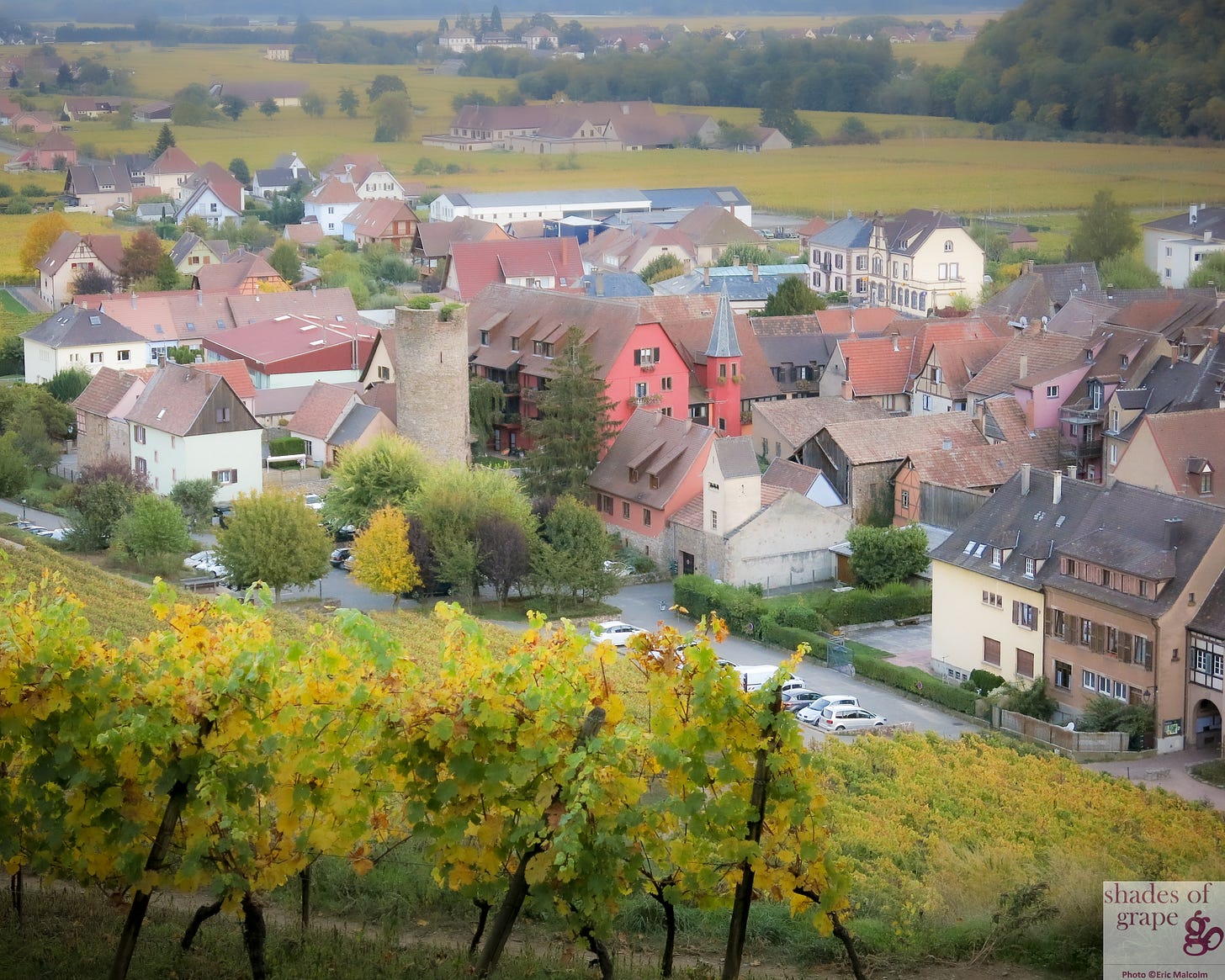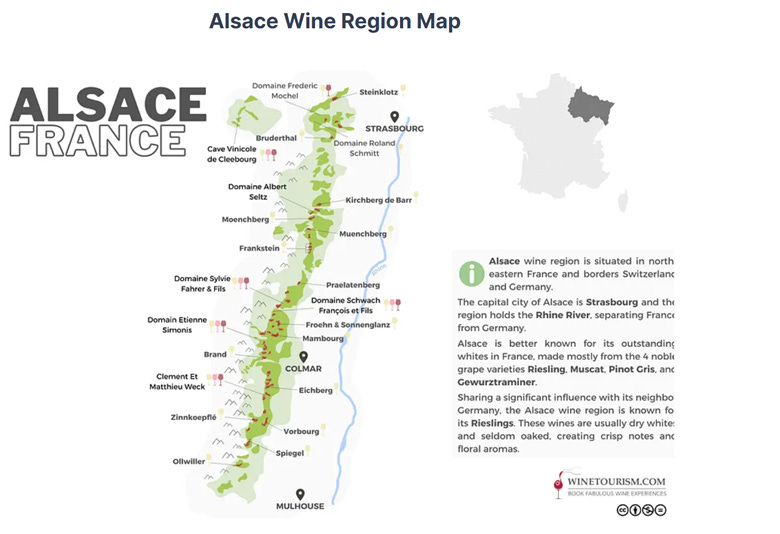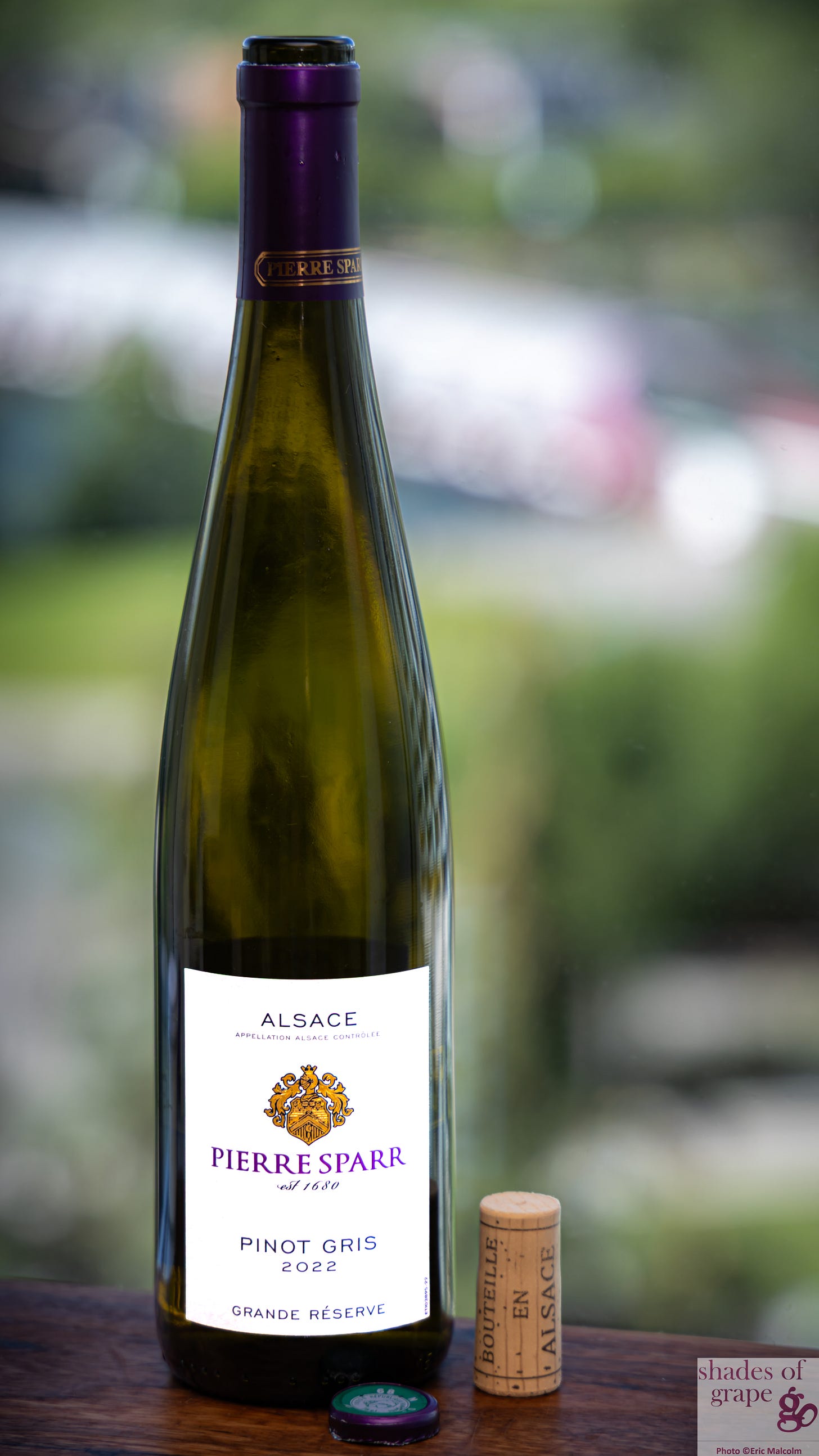Alsace has German Roots, French Flair & is Home to Pinot Grigio's Fancy Cousin
- ping-pong, passports, bilingual grapes and more!
Interested in one-on-one curation time with me? Please reach out! No commitment or minimum purchase required.
If you live in Edmonton - I am here for you too! (No, contrary to the rumours - Cork is NOT opening a store in Edmonton BUT we want to deliver to YOU!)
Thanks to all the paid subscribers for their support! This funding helps cover the costs involved in creating these weekly articles!
Appreciate my wine recommendations? Enjoy my personal wine curation service? Consider upgrading to a paid subscription! Help me continue sharing the world of wine with you.
Alsace is such a wonderful wine region to visit. So many cute towns, a great food scene, and of course great wine-food pairings!
Alsace is in the northeast of France, about 480 km east of Paris. Its wine region is flanked by the Vosges Mountains to the West and paralleled by the Rhine River to the east, which also acts as the French - German border. When I wrote about Weissburgunder (Pinot Blanc) recently, the featured wine was from the Mosel wine region, in the Mosel River valley, Germany, to the northwest of Alsace.
Control over Alsace (or Elsass in German) has ping-ponged between Germany and France. But if you ask their population if they consider themselves French or German, you will definitely get different answers. Many towns have, for the most part, German sounding names. The local dialect is German language based.
Wait a minute, wait a minute, did you say ping-ponged?
Yes! Okay let’s get into it.
The Celts dominated a great portion of Europe prior to Christ.
Oh my, we are into the pre-Christian era again! (eye roll)
Julius Caesar conquered Alsace in the 1st century BC, bringing his Latin language with him. In the 5th century AD, the Franks took over. The Franks were Germanic-speaking people. Charlemagne eventually was crown king of the Franks in 768 and became the first emperor of the Romans in 800. This was later called the Holy Roman empire. On the Holy Roman Empire in 800 AD map below, the “s” on Reims (just left of map center) almost touches the Rhine River.
In the 17th and 18th century, Latin was replaced by French as the most important language in the whole of Europe. However in Alsace, while familiarity with French grew German dialects were spoken, and standard German (both oral and written) was still used by the great majority. The French National anthem was even translated to German!
Hilarious!
I think so too.
But let’s fast forward to when the real ping-ponging starts:
In 1871, France ceded Alsace to Germany after the Franco-German War. Alsace was then “retroceded” to France in 1919, after World War I. In 1940, during World War II, Alsace was again ceded to Germany, with the “final retroceding” to France occurring 5 years later at the end of World War II.
Wow! Think of the administrative paperwork with passports!
Exactly!
What grapes are grown in Alsace and what language do they speak to each other?
They speak Grapeish of course (not to be confused with Klingon, for Star Trek fans out there)! Alsace grows four main grapes: Riesling, Gewürztraminer, Muscat à Petit Grains, and Pinot Gris. Supporting grapes are Pinot Blanc, Pinot Noir, and Sylvaner. It would be fair to say that if they took sides, Riesling and Sylvaner are German, Muscat à Petit Grains and the Pinots are French, while Gewürztraminer is bilingual due to his French Savagnin grape and German Traminer grape lineage.
What about wine style?
Alsace is known for white wines (90%), although Pinot Noir is trying to gain market share. They have been growing Pinot Noir for a while but perhaps have not quite perfected the wines - none have yet immigrated to my market. Stay tuned on that!
Alsatian wines are typically NOT blended nor oaked. For whites, all but the Pinots are considered aromatic.
Aromatic? Definition please!
Wine Spectator defines the term aromatic as: “a term loosely given to white wines that have aromas that really leap out of the glass, particularly with floral or herbal notes.”
Pinot Gris in Alsace is different than Pinot Gris/Pinot Grigio grown elsewhere. The featured wine is an Alsatian Pinot Gris, as you will discover below.
Alsace also produces sweet wines, called Vendange tardive (Late harvest) and Sélection de grains noble (Botrytized wines). These are ‘sweet-sweet’ – like serve with dessert sweet.
Now this is where these wines get tricky. Understanding the level of sweetness to be categorized as dry, off-dry, or medium-dry can be very difficult. The region is trying to address this challenge with an EU labeling system, implemented starting as of the 2021 vintage.
You sound skeptical.
Well, let’s just say I thought the featured wine, a 2022, was dry. But it is medium-dry. I really like it, so I decided to feature it. The problem is if a wine professional was misled … how will the general public make out? So get recommendations from your store. Or roll with it and enjoy the ride!! Again, I really love the quality of this wine. It is a classic Alsatian Pinot Gris in terms of flavors!
Well now I am excited to try it!!
Enjoying my recommendations? Consider upgrading to a paid subscription.
Pierre Sparr Pinot Gris Grande Réserve 2022 from Alsace, France
Style: Medium Body Medium-Dry Fruity White Wine
Varieties: 100% Pinot Gris
This intriguing wine has floral, ripe peach, yellow apple, apple pie filling, pastry, cream, white cheese, ginger, honey, almond paste, with hints of grapefruit, almond, and cinnamon notes. The wine has a medium-dry sweetness level and a long finish.
Best pairings: Blackened shrimp or fish, Spicy Asian dishes, Grilled chicken with honey-ginger glaze, Quiche, Asparagus in a butter sauce, Carrot ginger soup, Aged cheese: Beemster & Munster
Serving Temperature: 7-8 degrees Celsius
Serving Tips: Simply enjoy!
Price: ~$25 Cdn
If you're in Alberta and want a one-on-one wine curation experience, please reach out! No commitment or minimum purchase required. Interested? Please reach out!
If you live in Edmonton - I am here for you too! (No, contrary to the rumours - Cork is NOT opening a store in Edmonton BUT we want to deliver to YOU!)
A huge thank you to my paid subscribers—your support helps cover the costs of creating these weekly articles.
Love my wine recommendations? Enjoy my personal wine curation service? If you find value in my writing, consider upgrading to a paid subscription to help me keep sharing the world of wine with you!
Like what you are reading? Click on the ❤ to let me know it resonated with you!
SOURCES:
Alsace (2025) Encyclopædia Britannica. Available at: https://www.britannica.com/place/Alsace (Accessed: 10 July 2025).
Alsace-Lorraine (2025) Encyclopædia Britannica. Available at: https://www.britannica.com/place/Alsace-Lorraine (Accessed: 10 July 2025).
Alsace-Lorraine. Available at: https://www.alsace-lorraine.org/images/pdf/Alsacelanguage.pdf (Accessed: 11 July 2025).
Free wine maps to download (no date) WineTourism.com. Available at: https://www.winetourism.com/wine-maps/#Wine-maps-of-French-wine-regions (Accessed: 10 July 2025).
Harding, J. and Robinson, J. (2023) The oxford companion to wine. Oxford, United Kingdom: Oxford University Press.
MacNeil, K. (2022) The wine bible. New York, NY: Workman Publishing.
What are the ‘aromatic’ white wine grape varieties? (2018) Wine Spectator. Available at: https://www.winespectator.com/articles/what-are-aromatic-white-wines-56183?utm_source=chatgpt.com (Accessed: 10 July 2025).
Wine & Spirit Education Trust (2021) D3: Wines of the World - An accompaniment to the WSET Level 4 Diploma in Wines. Version 1.2. London: Wine & Spirit Education Trust.






I believe it's the obsession that many Americans have with overblown Cabernet Sauvignon, which seems to be their definition of quality. So they'll drink the wine in Alsace because there's really no choice, but I can imagine what they're thinking.
One of the things I discovered in the wine business is that it's almost impossible to sell Alsace wine to Americans. They'll go over there and drink it, but as they get home they're reaching for the Chardonnay. Quelle tristesse, as the French would say.